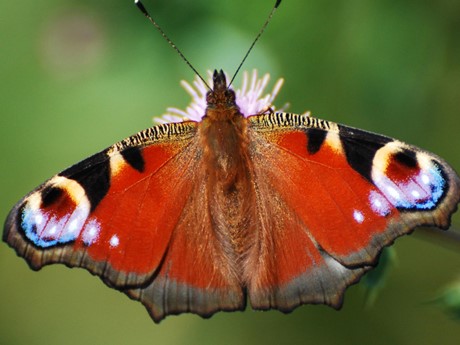Fly agaric: what to look for, where to find it and other amazing facts
Kate Warriner, 01/10/2022
As autumn progresses, we will start to see rich colours appearing in nature – reds, oranges, yellows. None is more vibrant than the UK’s most distinctive and famous fungus – fly agaric (Amanita muscaria).
Now that the UK is experiencing more rainy and wet conditions, you may start seeing this bright species pop up in the undergrowth near trees and in woods near you. Looks downwards and see if you can spot a world famous fungus on your autumn walks.
Where to find fly agaric
Fungi grow underground in vast networks of hair-like strands, what you see on the surface – the mushrooms – are in fact the spore-producing structures known as fruiting bodies. The ‘fruit’ emerges as the weather gets wetter and more humid.
Fungi grow close to trees so they can entwine with roots and exchange nutrients that both sides benefit from – called a symbiotic relationship. Fly agaric is distributed throughout the UK and particularly favours areas around birch and pine trees, and many of our Nature’s Calendar recordings attest to this. Look for it along paths and ditches among the leaf litter.

Fly agaric growing in birch woodland. Photo: Martin Stimson
How to spot fly agaric
It is classic image of a toadstool – round, red cap with white ‘wart-like’ spots. It has white gills and white stem with a bulbous base.
A fading cap colour, flat top, and ragged edges are all signs of age, and the spots can be washed off with rain. Be careful! In these cases, Fly Agaric can be confused with other red fungi (Russula species). Check for the distinctive bulbous base of the stem which isn’t present in other species.

Older specimen: flat, with some of the colour and spots washed off. Photo: Michelle Penfold

Younger specimen: domed, deep red with intact spots. Photo: Matthew Richards
Why is fly agaric famous?
This beautiful fungus is synonymous with the classic image of a toadstool. It’s illustrated in fairy and folk tales alongside magical beings like elves and faeries and is famously thought to have inspired the size-changing mushroom in Lewis Carroll’s ‘Alice in Wonderland’. It shows up next to Santa on old Christmas cards, and is thought by some to have inspired his red suit and flying reindeers. It’s even found in modern pop culture – the mushroom in Super Mario videogames borrows the red and white spots.
Some of these allude to its effects on humans. Fly agaric is poisonous to humans when ingested, and is a known hallucinogenic – it contains toxins which can change our perception of reality. You can find various tales of its past uses.
- It’s been used as an ingredient in ancient ritual drinks like ‘Soma’ to give the drinker divine powers.
- Traditionally it was crumbled into milk to catch flies by making them sleepy – a rudimentary pesticide.
- There are even reports that there’s a market for the urine of those who have ingested it – possibly a cheap way to get a hallucinogenic experience?

Fly agaric on a festive postcard. Image: ungenannt
Spot fly agaric and help us track the beginning of autumn
This is the only fungus we record as part of Nature’s Calendar, and it’s a great indicator of seasonal change in autumn. It’s typically first seen from August until October, but last year we had records into November. And since it’s found across the UK, everyone can look out for it. We have only had four records so far this year - could you be the next to submit one?

